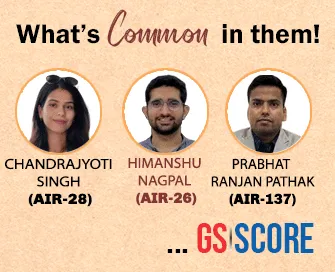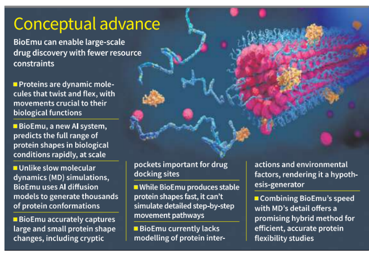

21st July 2025 (12 Topics)
Mains Issues
Context
A recent political controversy in Tamil Nadu has emerged over the use of temple surplus funds for building colleges, reigniting debates on the legal and constitutional permissibility of state involvement in religious endowments and the broader vision of social justice.
Temple Endowments and State Regulation – A Historical and Legal Overview
- Historical Context of Religious Endowment Regulation
- East India Company’s 1817 Regulation: The Religious Endowment and Escheats Regulation, 1817 marked the beginning of state oversight of temple resources in India.
- Queen Victoria’s 1858 Proclamation: While promising non-interference in religious affairs, it allowed governance of secular aspects like land and administration.
- Madras Presidency's Legislative Leadership: The Justice Party in 1920 institutionalised state involvement with the Hindu Religious Endowments Act, reflecting a balance between religious freedom and public accountability.
- Legal and Constitutional Framework for Temple Fund Utilisation
- Tamil Nadu Hindu Religious and Charitable Endowments (HR&CE) Act, 1959:
- Section 36: Permits appropriation of surplus funds after temple maintenance and training are fulfilled, with approval of the Commissioner.
- Section 66: Authorises surplus funds for building universities or colleges, provided they offer courses in Hindu religion or temple architecture.
- Judicial Endorsement: Constitutional courts have upheld the validity and constitutionality of the 1959 Act.
- Socio-Cultural and Reformative Role of Temples
- Ancient Practice of Educational Use: Historical records from the Chola and Vijayanagara empires show temples were also learning centres.
- Mandapams and Temple Inscriptions: Evidence of cultural and educational activity in temple premises.
- Alignment with Historical Intent: Using temple funds for educational institutions continues this tradition, rather than deviating from it.
- Political and Social Justice Dimensions
- Legacy of the Self-Respect Movement: The regulation of temple affairs was central to anti-caste mobilisations in the Madras Presidency.
- Temple Entry Legislation: Enabled by state oversight, it allowed access to marginalised communities in 1936 and 1947.
- Backward Class Representation in Priesthood: Tamil Nadu and Kerala have appointed non-Brahmin priests — a historic reform rooted in the same regulatory framework.
Way Forward
- Balanced Legal Framework Exists: The Tamil Nadu HR&CE Act provides a legitimate and regulated mechanism for utilising surplus temple funds for socially beneficial purposes, especially education.
- Alignment with Original Temple Function: Historical precedence indicates temples were central to knowledge dissemination; utilising funds for education does not violate religious sanctity.
- Strengthening Oversight and Transparency: The HR&CE Department should enhance transparency in fund allocation and consult temple stakeholders while ensuring educational investments uphold the Act's intent.
- Public Awareness and Legal Literacy: The government must promote public understanding of legal provisions to prevent misinformation and electoral misuse.
- Preserve the Social Justice Legacy: Efforts to dilute state involvement would risk eroding a century-long foundation of progressive reforms, particularly in anti-caste legislation and backward class empowerment.
|
PYQ: The concept of secularism in the Indian Constitution is different from that in the West. Discuss. (2015) |


Mains Issues
Context
The European Commission is developing an age-verification app under the Digital Services Act (DSA) to prevent minors from accessing harmful online content, particularly pornography. However, this move has sparked debates over privacy and data protection.
- Objective of the Age Verification Plan
- The European Commission aims to safeguard minors from harmful online content (e.g., pornography) by ensuring only adults can access it.
- Focus is on enforcing age restrictions for accessing sensitive platforms while protecting user privacy.
- Legal and Regulatory Framework
- The initiative is part of the Digital Services Act (DSA), which seeks to regulate major online platforms, including tech giants and content-hosting websites.
- Age verification app to be developed in line with the European Digital Identity Wallets (EID) standards and ready by end of 2026.
- Countries Participating in the Pilot Project
- France, Germany, Denmark, Spain, Greece, and Italy are part of the pilot phase.
- France is leading trials and is expected to enforce mandatory age verification.
- Technical and Privacy Provisions
- Age verification app will allow users to prove age without revealing identity.
- Open-source and based on zero-knowledge proof cryptographic protocols—meaning platforms can verify age without accessing personal data.
- Aims to prevent the collection, storage, or misuse of personal identifiers.
- Support and Opposition
Support:
- French President Emmanuel Macron backs social media restrictions for users below 15 years.
- European regulators stress need for privacy-centric
Criticism:
- Critics, including privacy advocates and major tech companies, argue the system is impractical, vulnerable to misuse, and violates privacy rights.
- Aylo, the parent company of Pornhub, opposed the move, calling it “device-based age verification.”
Significance
- The EU’s approach marks a paradigm shift in child protection policy in the digital age, making it a legislative model for global emulation.
- It acknowledges the emerging psychological and social risks faced by children online, such as:
- Early exposure to harmful content.
- Loss of anonymity.
- Digital grooming and cyberbullying.
Concerns
- The move raises serious questions on user consent, data protection, and freedom of expression.
- Major platforms are resisting due to potential market loss, compliance burdens, and technical constraints.
- There is ambiguity in determining what constitutes “harmful” content and uniform enforcement across EU nations.
|
Digital Services Act (DSA):
|
|
PYQ: “What are the challenges in regulating digital technology and ensuring user privacy? How can data protection frameworks balance innovation and individual rights?” (2021) |


Mains Issues
Context
The Environment Ministry exempted around 78% of India's coal-based thermal power plants from installing flue gas desulphurisation (FGD) systems meant to reduce sulphur dioxide (SO?) emissions, citing revised categorization norms.
FGD Norms Relaxed Amidst Concerns over Air Quality and Policy Rollbacks
Background and Importance of FGD Installation
- SO? Emissions from Thermal Power Plants:
- SO? released into the atmosphere reacts with ammonia to form ammonium sulfate, a major contributor to PM2.5 pollution.
- Exposure causes serious health issues such as asthma, bronchitis, and cardiovascular diseases.
- Environmental and Health Hazards:
- SO? contributes to acid rain and secondary particulate matter formation.
- These pollutants severely impact public health and degrade ecosystems.
Regulatory Timeline and Policy Developments
- Initial Notification (2015):
- Ministry of Environment mandated SO? and other emission control norms for coal power plants, to be met by December 2017.
- Power companies cited high costs and disruption risks; deadlines were extended.
- Categorization Norms (2021):
- Plants were divided into 3 categories:
- Category A: Within 10 km of critically polluted or non-attainment cities – deadline: 2022.
- Category B: Within 10 km of the National Capital Region (NCR) – deadline: 2022.
- Category C: All remaining plants – deadline: 2024.
- Plants were divided into 3 categories:
- July 2025 Decision:
- Plants in Category C that are operational till 2030 are exempted from installing FGD.
- Only plants set to operate beyond December 2030 will be reviewed on a case-by-case basis.
Scientific Justifications and Criticisms
- Government’s Justification:
- Studies by IIT-Delhi, NIAS, and NEERI claim that SO? levels around plants are within limits.
- FGD operation leads to increased CO? emissions, potentially offsetting air quality gains.
- Counter-Arguments by Experts:
- CREA and CSE argue that monitoring systems (CAMoN) fail to capture actual SO? levels due to poor methodology.
- CSE study shows that SO? plumes travel long distances before converting into secondary pollutants, misleading emission inventories.
Key Concerns Raised
- Dilution of Environmental Norms: Exempting a vast majority of plants undermines clean air goals and the 2015 mandate.
- Impact on Public Health: Inadequate SO? regulation may perpetuate respiratory and cardiovascular health issues, particularly in vulnerable populations.
- Climate vs Air Quality Trade-off: The argument that FGD increases CO? poses a dilemma between air quality and climate change mitigation efforts.
Way Forward:
- Independent Third-Party Verification: Establish independent audits of SO? emission data from all coal plants.
- Strengthening Monitoring Systems: Upgrade CAMoN with better spatial coverage, remote sensing, and real-time data integration.
- Adaptive Policy Framework: Adopt a flexible but accountable approach where exemptions are based on verified performance and emission records.
- Just Energy Transition Plan: Gradually phase out polluting plants with a roadmap aligned to India’s National Clean Air Programme (NCAP) and net-zero targets.


Prelims Articles
Context
The Supreme Court will hear a Presidential Reference under Article 143 regarding whether courts can impose timelines and prescribe modalities for the President and Governors in granting or withholding assent to State Bills under Articles 200 and 201 of the Constitution.
Constitutional Basis of the Issue:
- Article 143 empowers the President to seek the advisory opinion of the Supreme Court on questions of law or fact of public importance.
- Article 200 deals with the Governor’s powers regarding State Bills — options include granting assent, withholding assent, or reserving the Bill for the President.
- Article 201 empowers the President to either assent to or withhold assent from a Bill reserved by the Governor.
Key Legal Questions Raised in the Presidential Reference:
- Can courts prescribe time limits for the President or Governor to act on State Bills?
- Can courts substitute constitutional powers of the executive under Article 142, which permits the Court to pass orders to do "complete justice"?
- Is the concept of "deemed assent" by the President or Governor constitutional?
- Can judicial intervention occur before a Bill becomes law?
- Can a two-judge Bench interpret constitutional provisions of substantial importance without referring the matter to a Constitution Bench under Article 145(3)?
Background:
- The reference arises from an April 8, 2024 judgment by a two-judge Bench which deemed that 10 re-passed Bills by the Tamil Nadu Legislative Assembly had received assent via Article 142, due to delays by the Governor and President.
- The Court ruled that Governor’s inaction was unconstitutional and that indefinite delay violated legislative supremacy.
Constitutional Debate on Article 142:
- Article 142 allows the Supreme Court to pass any order necessary for “complete justice.”
- The Presidential Reference seeks to know whether Article 142 can override the express provisions of the Constitution regarding assent to legislation.


Prelims Articles
Context
The Delhi Assembly has announced a three-day training programme for legislators to familiarize themselves with the National e-Vidhan Application (NeVA), a digital platform aimed at enabling paperless legislative functioning.
National e-Vidhan Application (NeVA):
- Launched by: Ministry of Parliamentary Affairs.
- Objective: To digitize the functioning of State Legislatures and Parliament through a unified platform.
- Key Features:
- End-to-end paperless governance within legislatures.
- Live updates of legislative proceedings.
- Real-time access to documents like Bills, Question Hour lists, and Committee reports.
- Environmental Impact: Promotes sustainability by reducing paper usage.
- Administrative Impact: Enhances transparency, accountability, and legislative efficiency.
Digital India Context:
- NeVA is a part of the Digital India initiative, aiming to integrate digital technology in governance.
- Enables remote access to legislative data, enhancing participation and citizen awareness.
Funding Model:
- Funded through Central Sponsored Scheme.
- The Centre bears 60% of the cost, and the State Government bears 40%.


Prelims Articles
Context
Scientists from INST Mohali, IIT-Dharwad, and IIT-Kharagpur have developed a biodegradable, reusable water filter that removes harmful industrial dyes using a novel piezo-photocatalytic process.
Institutions Involved:
- Institute of Nano Science and Technology (INST), Mohali
- IIT-Dharwad
- IIT-Kharagpur
Pollution Problem Addressed:
Industrial effluents, especially from textile industries, often discharge Congo Red and Methylene Blue dyes. These organic dyes are non-biodegradable and pose serious health hazards (skin irritation, gastrointestinal and respiratory problems).
Limitations of Existing Technologies:
- Conventional water treatment methods like ozone treatment and Fenton chemistry are effective but are energy-intensive, expensive, and unsustainable due to chemical and electricity consumption, increasing carbon footprint.
Innovative Filter Composition:
- Polylactic Acid (PLA): A biodegradable polymer, initially hydrophobic but treated with sodium hydroxide to become hydrophilic.
- Bismuth Ferrite Nanoparticles (BFO): Deposited on PLA sheets to act as a catalyst under visible light (photocatalysis) and ultrasound (piezoelectric effect).
Mechanism – Piezo-Photocatalysis:
- Photocatalysis: BFO under visible light generates reactive oxygen species (ROS) to degrade dyes.
- Piezoelectric Effect: BFO generates internal electric fields under ultrasonic vibration, enabling dye degradation in the absence of light.
- Piezo-Photocatalysis: A synergistic effect combining both, effective day and night.
Real-world Application:
- Successfully tested on actual wastewater from a textile plant.
- Potential for deployment in Jal Nigam and Namami Gange initiatives.
Use of Artificial Intelligence:
- Machine learning models (Random Forest, XGBoost, Neural Networks) used to predict dye degradation rates under varying experimental parameters, showcasing the integration of AI in environmental engineering.


Prelims Articles
Context
A new deep learning model named BioEmu, developed by Microsoft, Rice University, and Freie Universität, has been unveiled to predict dynamic protein structures more efficiently than traditional methods like molecular dynamics simulations.
BioEmu
Introduction of BioEmu:
- BioEmu is an AI diffusion model trained on:
- Protein structures from AlphaFold predictions
- 200 milliseconds of MD simulations
- 5 million mutant sequences from experimental data
- It uses the reverse-diffusion process to generate equilibrium ensembles — the full range of stable conformations a protein may adopt under physiological conditions.
Key Capabilities:
- Predicts 83% of large shifts and 70–81% of small conformational changes.
- Accurately models local unfolding, cryptic pocket formation, and protein flexibility, even in proteins without a stable 3D structure.
- Enables thousands of conformation predictions in hours on a single GPU.
Applications and Utility:
- Useful in drug discovery, particularly for flexible target proteins such as Ras, implicated in cancer.
- Assists in hypothesis generation for experimental follow-up.
- Can act as a pre-screening tool before running detailed MD simulations.
Limitations:
- Does not model interaction with drug molecules, cellular environments, pH changes, or multi-protein complexes.
- Offers static predictions — unlike MD, it cannot trace step-by-step molecular pathways.
- Prediction reliability scores like those in AlphaFold are not yet integrated.


Prelims Articles
Context
The Union Health Ministry has directed all government departments to prominently display oil and sugar content of popular Indian snacks in official settings, as part of its initiative to combat rising non-communicable diseases (NCDs) in India.
Objective of the Initiative:
- The Health Ministry has launched the “Display of Sugar and Oil Boards” initiative to promote healthy dietary choices through visual behavioural nudges in schools, offices, and public institutions.
- These boards will inform people of the hidden fat and sugar content in widely consumed foods such as samosa, vada paav, kachori, pizza, and burger.
Backdrop of Rising NCDs in India:
- Non-Communicable Diseases (NCDs) are responsible for over 66% of all deaths in India.
- Diseases such as cardiovascular ailments, diabetes, cancers, and chronic respiratory diseases are emerging as critical public health challenges, particularly among individuals over 30 years of age.
Methodology for Nutrient Calculation:
- Nutrient values are assessed via:
- Laboratory analysis of prepared foods
- Ingredient-level aggregation using the Indian Food Composition Tables (IFCT) published by ICMR–National Institute of Nutrition (NIN), Hyderabad
- Nutrient values are generally expressed per 100g for public understanding.
Definition of HFSS Foods (2024 Guidelines):
- According to ICMR-NIN Dietary Guidelines (2024), a food is classified as High Fat, Sugar, and Salt (HFSS) if:
- >10% of energy comes from total sugar
- >15% of energy comes from added fat/oil
- Salt content exceeds 625 mg per 100g
WHO Nutritional Recommendations:
- For adults:
- Total fat: < 65g/day
- Added sugar: < 25g/day
- Salt: < 5g/day
- Age-specific limits exist for children.
Policy Implementation Measures:
- Government stationery, such as letterheads, notepads, envelopes, and folders, are also to carry health messages against obesity.
- The measure is aimed at sustained behavioural modification by increasing awareness of nutritional imbalances.
Public Health Relevance:
- The initiative aligns with broader efforts under Ayushman Bharat, Poshan Abhiyaan, and global WHO mandates on nutrition-sensitive policies.
- It also targets urban lifestyle diseases exacerbated by increased consumption of processed and functional snacks with low nutrient density.


Prelims Articles
Context
Researchers at the Large Hadron Collider beauty (LHCb) experiment at CERN reported the first-ever observation of CP violation in baryons, specifically in ?b? baryon decays—an important development in explaining the matter-antimatter asymmetry of the universe.
What is CP Violation?
- CP stands for Charge Conjugation (C) and Parity (P).
- Charge Conjugation (C): Transformation of a particle into its antiparticle.
- Parity (P): Spatial inversion, or mirror reflection of a physical process.
- CP Symmetry implies identical physical laws for matter and antimatter.
- CP Violation refers to processes where this symmetry is not conserved.
Why is CP Violation Important?
- One of the three Sakharov conditions for generating the observed matter-antimatter asymmetry in the universe.
- Helps explain why the observable universe consists predominantly of matter, despite the Big Bang theoretically producing equal amounts of matter and antimatter.
New Discovery (2024):
- CP violation observed for the first time in baryons (particles made of three quarks), not just mesons (quark-antiquark pairs).
- The particle involved: ?b? baryon (composed of up, down, and bottom quarks).
- Decay process analyzed: ?b? ? proton + kaon? + ?? + ??.
- Measured CP asymmetry: ~45%, with a statistical significance of 5.2?—above the 5-sigma threshold required to claim a discovery in particle physics.
Experiment Details:
- Conducted at CERN’s LHCb Detector.
- Utilized proton-proton collisions and machine learning algorithms to isolate relevant decay events.
- Used control channels to correct for experimental biases and isolate genuine CP violation.
Significance in Physics:
- Extends the domain of CP violation from mesons to baryons.
- Opens new directions to search for physics beyond the Standard Model.
- Provides potential clues to the cosmological matter-antimatter asymmetry.


Editorials
Context
The Aircraft Accident Investigation Bureau released a preliminary report on the June 12, 2025, Air India Boeing 787 crash in Ahmedabad, which remains inconclusive, raising concerns over aviation safety oversight and regulatory failures in India.
Regulatory and Operational Deficiencies
- Erosion of Regulatory Oversight: The Directorate General of Civil Aviation (DGCA), under the Ministry of Civil Aviation (MoCA), has shown limited internal technical capabilities, relying excessively on foreign regulators, as witnessed in the Pratt & Whitney engine failure (2017–18).
- Pilot and Crew Exploitation: Airlines routinely violate Flight Time Duty Limitations (FTDLs), while DGCA issues exemptions. Fatigued pilots operate under coercive employment contracts, and cabin crew safety roles are undervalued, compromising in-flight security.
- Airport Infrastructure and Airspace Violations: Since 2008, the government bypassed statutory protections, allowing unauthorised construction near airports, such as in Mumbai, increasing physical and radar interference risks. New airports like Navi Mumbai face similar threats due to misplaced NOC policies.
Judicial Oversight and Legal Loopholes
- Judicial Interventions in Safety: The judiciary played a critical role in preventing high-risk developments, as in the 2016 Bombay High Court stay that indirectly prevented additional casualties during the 2018 Ghatkopar crash.
- Statutory Dilution and Conflicted Committees: The 2015 Rules gave statutory recognition to appellate committees that had already permitted unsafe construction. These panels are staffed by officials responsible for safety enforcement, creating conflict of interest.
- Neglect of PILs and Accountability Gaps: Despite multiple PILs highlighting Inner Horizontal Surface (IHS) violations and radar obstructions, authorities including DGCA and AAI failed to act transparently, allowing obstacle proliferation from 125 (2010) to over 1,000 (2025).
Systemic Culture of Neglect and the Way Forward
- Absence of Safety Culture: Indian aviation lacks a comprehensive safety culture, as systemic violations persist despite existing knowledge of risks. The Swiss cheese model illustrates how multiple aligned failures lead to fatal accidents.
- Whistle-blower Suppression: Internal dissent is discouraged; whistle-blowers reporting safety violations face transfers, demotions, or termination, further entrenching non-compliance within airlines and AAI.
- Need for Immediate Reform: The entire ecosystem — aircraft design, maintenance, crew welfare, air traffic management — requires urgent regulatory, judicial, and policy overhaul. Without reform, future disasters are imminent.
Practice Question:
"Discuss the role of regulatory institutions in ensuring air safety in India. Examine the challenges posed by infrastructural encroachments, regulatory conflicts of interest, and judicial inaction. Suggest institutional reforms to strengthen aviation safety oversight." (250 Words)

Editorials
Context
Foreign Direct Investment (FDI) flows to Emerging Markets and Developing Economies (EMDEs) have fallen to a two-decade low in 2023, prompting concern over declining global investment appetite and necessitating proactive reforms by India to remain competitive and attractive for capital inflows.
GLOBAL TRENDS AND INDIA’S FDI POSITIONING
- Declining Global FDI Flows
- Trend Observation: FDI inflows to EMDEs fell to $445 billion in 2023, the lowest since 2005, with their GDP share shrinking to 2%.
- Impact: Global slowdown, fewer trade deals, and rising geopolitical tensions have contributed to this dip.
- India’s FDI Experience Amidst Global Headwinds
- Comparative Performance: India saw a 14% increase in gross FDI in FY25, but net FDI plunged 96% due to repatriation and low reinvestment of profits.
- Implication: Despite being better placed structurally, India mirrors the global trend with critical domestic challenges.
- Sectoral and Geographic Trends in FDI
- Sectoral Composition: Growth areas include digital services, EVs, clean energy, and manufacturing, while legacy sectors like telecom decline.
- Regional Spread: FDI remains concentrated in Maharashtra, Karnataka, Tamil Nadu, Gujarat, and Delhi.
POLICY GAPS AND STRUCTURAL REFORMS NEEDED
- Addressing Structural Bottlenecks
- Logistics & Infrastructure: High turnaround times (e.g., Kolkata port: 140+ hours) hinder investor confidence.
- Action Required: Prioritise port efficiency, logistics modernization, and contract enforcement.
- Trade Facilitation and Strategic Alliances
- Bilateral Deals: India must accelerate deals with EU, UK, Australia, UAE to counter China+1 strategy.
- Integration Strategy: India’s FTAs must align with domestic capabilities and seek higher trade coverage.
- Regulatory Framework and Investment Climate
- Ease of Doing Business: Swift land acquisition, legal clarity, and tax reforms are prerequisites.
- Institutional Coordination: A centralised body must streamline approvals across Union and State entities.
UNLOCKING FUTURE INVESTMENT POTENTIAL
- Capitalising on Demographic Advantage
- Human Capital: India's young workforce can become a magnet for investment with appropriate skilling and job creation.
- Policy Focus: Education, digital infrastructure, and ease of hiring need sustained focus.
- Leveraging Global Shifts
- Investment Redirection: Geopolitical realignments post-COVID-19 and supply-chain diversification create space for India.
- Repositioning: India must project reliability, openness, and scale to investors.
- Confidence and Clarity as Core Pillars
- Investor Sentiment: Capital seeks transparent, stable, and credible economic governance.
- Strategic Messaging: India must project consistent policies and institutional commitment to reforms.
Practice Question
In the context of declining global FDI flows, critically analyse the challenges India faces in attracting and retaining foreign capital. Suggest structural reforms required to make India a preferred investment destination. (250 words)


Editorials
Context
India will host the AI Impact Summit in February 2026, aiming to demonstrate how governments—not just corporations—can guide artificial intelligence (AI) toward inclusive development, safety, and global cooperation.
Leveraging India’s Strengths for Inclusive AI Leadership
- Democratizing AI through National Consultation: India’s Ministry of Electronics and IT initiated a nationwide AI consultation via the MyGov platform, inviting inputs from students, researchers, and startups, thus providing the Summit with grassroots legitimacy and democratic input.
- Digital Public Infrastructure as Proof of Capability: India’s success with platforms like Aadhaar and UPI showcases the equitable deployment of digital tools, positioning India to guide AI’s inclusive application at a global scale.
- Pledge-Based Accountability Framework: India proposes that delegations make actionable pledges—such as translating healthcare information into local languages using AI—tracked publicly to foster transparency and measurable impact.
Addressing Global Divides and AI Governance Gaps
- Bringing the Global South to the Forefront: India can ensure inclusive representation by promoting participation from underrepresented regions and proposing an AI for Billions Fund, funded by development banks and Gulf investors.
- Establishing a Shared Safety Protocol: India can propose the formation of a Global AI Safety Collaborative that standardizes stress testing, red-teaming, and bias evaluation of AI models exceeding a compute threshold.
- Voluntary Yet Binding Code of Conduct: To balance regulatory extremes, India may draft a middle-path AI Code of Conduct mandating voluntary yet specific norms like reporting red-team results and disclosing compute thresholds.
Promoting Global Unity and Avoiding Geopolitical Fragmentation
- Avoiding AI Summit Fragmentation: The Paris AI Summit's divisions highlighted geopolitical strains; India’s 2026 summit must aim for consensus by focusing on shared values, not rival blocs.
- Championing Multilingual and Cultural Diversity: India could announce a multilingual AI challenge targeting 50 underserved languages, reinforcing that AI talent and value creation are globally distributed.
- Reframing India’s Global Identity: Rather than building a new authority, India should weave together existing global AI frameworks and emerge as a bridge between developed and developing nations.
Practice Question:
"India is uniquely positioned to mediate global efforts in artificial intelligence governance. Critically examine how India can leverage its digital public infrastructure and diplomatic standing to promote inclusive, safe, and equitable AI development at international platforms." (250 words)




